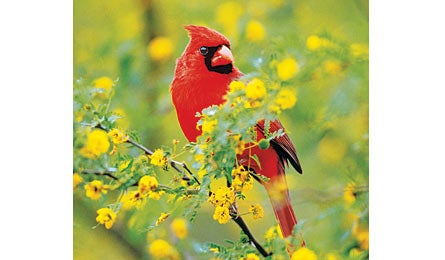Recording Nature: Calls of the Wild

'(Photo by Tom & Pat Leeson)'
Wilderness recordings add an auditory dimension to your hiking experience—making you more aware of the symphonic world around you and letting you enjoy those sounds back at home. Here’s how to get started.
Gear up
For high-quality recordings, skip the standard devices found at most electronics outlets, which are designed to pick up the frequencies of the human voice, and get a unit like Samson’s Zoom-H2 ($180, 4.5 oz., samsontech.com). It fits in your hand and has a lighted display, intuitive controls, a wide mic sensitivity (for panoramic sounds), and a standby mode that allows you to record instantly when an opportunity arises. (The $99 Zoom-H1 has similar sound quality but fewer controls.) Multitasking alternative: Use your smartphone’s recording feature. Downside: Most won’t nail the nuance of high-end frequencies (birds, insects) or low ones (bullfrogs), and you can’t control “gain” (below).
Practice in your backyard
>> Experiment with taping different types of sound (wind, a car, bees). Wear over-the-ear headphones so you can hear everything you’re recording. You’ll discover just how much background noise you get, and you’ll develop silent techniques for moving and using the recorder.
>> Keep the recorder’s gain on high. This increases the sensitivity for sounds that are distant, low in volume, or both. Low gain is best for recording your own voice or controlled events, like outdoor lectures by rangers.
Go to the right place at the right time
>> Opt for remote or sparsely populated trails, where there’s less human background noise.
>> Head to species-rich regions. Meadows, forest edges, and any place near water (lakes, bogs, streams, etc.) usually teem with wildlife.
>> Follow nature’s schedule. For the liveliest birdsong, target early to mid-morning in the spring, though some birds, such as owls, are nocturnal. Crickets and other insects are typically most vocal on summer nights and autumn days, while frogs and toads conduct evening chants in the spring. Ambient sounds change seasonally, too. Streams, for example, often run faster (and hence louder) in the spring but emit more nuanced burbling by late summer.
Capture the sound
>> Choose the file type. Wave files are broadcast-quality, but large and difficult to send and download. MP3s are compressed versions of wave files. The quality is slightly lower, but they’re the most common format for sharing audio files.
>> Keep your recorder handy. Some sounds repeat, but many are “one and done.” Stay ready.
>> Be creative. Train your ear for less-obvious sounds—rain on a tent, ribbiting frogs, wind through trees, bugling elk. With time, you’ll learn to discern, say, a river’s size and speed with your eyes closed. You also can use the recorder as a journal—capture thoughts in real time while hiking.
>> Don’t worry about pinpointing your target, like you would with a video camera. Identifying the source of the sound can be challenging, especially when it moves erratically. Just keep the device still. This creates a recording that really puts the listener “there,” since it will convey the changes in volume and pitch associated with movement.
>> Be patient. Rare recordings—like the buzz of a honeybee hive or the fleeting drumming of a pileated woodpecker—are there, if you wait. Since a 1GB memory card gives you two hours of MP3 recording (with the devices listed above), you have time.
Enjoy the melodies at home
>> Identify “mystery” sounds. Falcon’s Birding series of field guides (falcon.com) offers regional advice on where to look for birds and how to identify them. The Cornell Laboratory of Ornithology’s website (birds.cornell.edu) includes avian audio and video clips. Glimpsing your subject will help, but otherwise, use the region and habitat to check off candidates. Or send an audio file to naturesongs.com, which helps people identify unknown sounds.
>> Compare the sounds from different regions. Birds and insects have varying geographic dialects, so a song from Montana will differ from one in western Pennsylvania. Squirrels also have distinct chatters, and waves pounding California’s Lost Coast will sound different than Florida’s surf.
>> Post and share. Check with universities and museums that have wildlife recordings and post them to nature-sound websites like the Library of Natural Sounds (naturesounds.org).